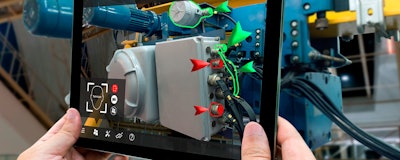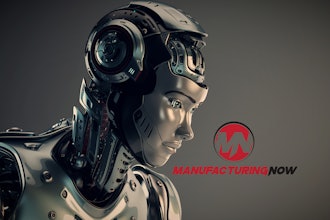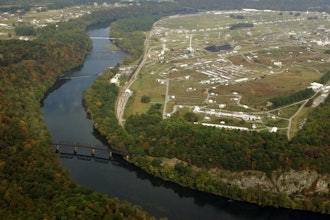
 Jaewan Park
Jaewan ParkThe fourth industrial revolution, commonly known as 4IR, is generating a host of new possibilities for manufacturers looking to enhance their production lines. Augmented Reality (AR) is key to this revolution and is now used by major companies like Siemens, Hitachi and Volkswagen to improve production and engineering.
Over the next five years, AR is expected to achieve a 20 percent increase in industry adoption, as companies set up smart factories—equipped with AR solutions—in an attempt to boost productivity and improve revenues. As these solutions become more sophisticated, the factory environment as we know it will radically change.
Here we will look at five ways AR will enhance the smart factories of the future:
No. 1 - AR can be your personal assistant
First, AR will improve the way tasks are managed and distributed among factory staff. By setting up a centralized AR assistant platform that can recognize individual employees as they arrive at work, Smart Factories will be able to inform workers of their daily responsibilities and let them know how their tasks are related to those of the previous worker.
This AR application is essentially an automated secretary, accessible across a variety of devices (including smartphones, tablets and head-mounted displays) which helps to streamline handovers between employees and improve accuracy and productivity in the workplace.
No. 2 - Visualizing data with the Internet of Things
To enhance the benefits of using AR as a personal assistant, factory managers just need to combine this technology with the Internet of Things (IoT).
If employees use AR applications equipped with IoT data visualization, they can access a world of real-time, operational information on temperature, electricity flow and power levels simply by holding a mobile camera over a machine sensor. All the factory owner needs to do is attach IoT sensors to the equipment, and AR will correctly identify and visualize the required information.
Workers can also access information about the equipment they need to use, with all the information augmented on a portable or head-mounted device (HMD). Such technology can greatly increase work efficiency and simplify monitoring procedures, and is especially useful if it is difficult to reach a particular piece of equipment, for example if hidden behind a wall or covered by a multitude of wires.
No. 3 - Voice command
Let’s not forget that the above-mentioned AR applications can be controlled by voice—a huge advantage in industrial settings where factory workers need to have both hands free to carry out their daily tasks.
When wearing voice-controlled HMDs, there is no need for employees to use a mousepad or look through thick paper manuals to find instructions on factory procedures. Instead, AR will improve safety for employees carrying out hazardous procedures and additionally save time by eliminating the need to put down their tools to look up instructions.
If they need support, workers can talk into their device and set up an AR-based video call, connecting them with experts in remote places. The on-site industrial worker can then share their environment via video and receive instant guidance with intuitive AR drawings, text or image sharing superimposed on their HMD.
No. 4 - Navigating the factory floor made easy
Finding a specific machine component in a large factory can be a challenge for even the most seasoned employee. Thankfully, advancements in AR will make it easier for workers to navigate their factory floor. With AR, employees will be able to use their handheld devices or HMDs to view a detailed floor plan with information on equipment location, emergency exits, fire extinguishers and more.
On top of that, AR indoor navigation technology will be able to automatically direct workers from their current position to the specific machine or piece of equipment they need to access. Workers can share their current location with colleagues, which also helps keep the workforce coordinated.
No. 5 - A ‘black box’ for factories
In the future, Smart Factories will be equipped with an industrial ‘black box’—a central computer which automatically records information from worker devices (i.e. smartphones, tablets and smart glasses) and collects vast amounts of valuable data on work procedures, all of which can be stored on the cloud. This computer, if integrated with IoT sensors, will make it possible to provide real-time information on machinery and allow workers to identify problems and make repairs before a minor default turns into an issue which could stop production.
For factory managers, possessing an AR black box will allow them to better evaluate staff performance. If there is a problem, they will who did it and exactly how it happened. Using that information, they can then improve the accuracy of future work procedures. In addition, in the case of an emergency, all relevant data on the incident is collected automatically, allowing workers to come up with an accurate and effective response and avoid a repeat of the same situation.
The Cusp of the AR Revolution
The AR revolution is gaining momentum. According to a Harvard Business School report from 2017, Xerox now resolves 76 percent of technical problems using smart glasses. Boeing managed to cut the amount of time it takes to train new staff by 35 percent thanks to the use of AR 3D drawing, while Coca-Cola increased its bottling line uptime and speed of line changeovers by 45 percent, using AR contents assistance.
The Smart Factory is emerging as one of the big trends in Industry 4.0, and manufactures that don’t catch on will not only be saddled with outdated production lines and less competitive products, but will also miss out of reduced operating costs and healthier bottom lines.
Jaewan Park is CEO of MAXST.






















